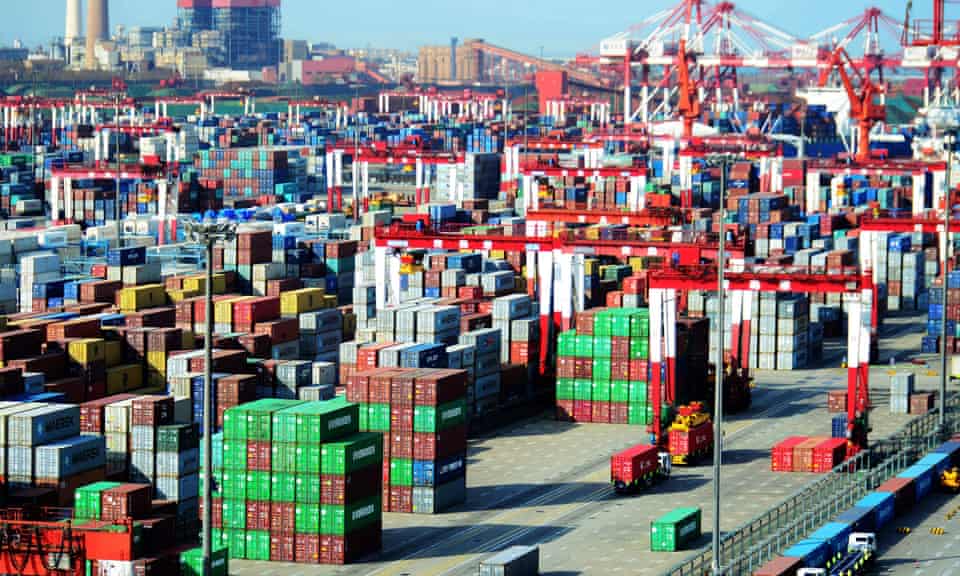
“An analysis of how trade tariffs impact the US economy, including their effects on consumer prices, domestic industries, international trade relationships, and overall economic growth. Explores both direct costs to American businesses and consumers as well as broader economic implications.”
The Genesis of Trump’s Tariff Policy
The Trump administration’s tariff policy was a significant departure from traditional trade practices, sparking a series of trade disputes and economic shifts. The policy’s origins, its immediate and long-term economic effects, and the potential future scenarios that may unfold in the post-Trump era. The inception of Trump’s tariff strategy can be traced back to his campaign promises to protect American industries and jobs. The policy was designed to address perceived trade imbalances and unfair trade practices by key trading partners, particularly China. The tariffs were imposed on a wide range of products, from steel and aluminum to consumer goods, with the intention of encouraging domestic production and reducing the trade deficit.
The Immediate Fallout After Tariffs
The implementation of these tariffs had immediate and far-reaching economic consequences. On one hand, domestic industries such as steel and aluminum production initially benefited from the protectionist measures, experiencing a temporary boost in production and employment. However, the ripple effects were not limited to these sectors.
Global supply chains were significantly disrupted, leading to increased costs for businesses that relied on imported components. Manufacturers faced higher input costs, which in turn were passed on to consumers, leading to inflationary pressures. The automotive industry, for example, saw a rise in the cost of steel and aluminum, impacting the production and pricing of vehicles.
Tariffs Will Make Trade And Market Volatile
The imposition of tariffs by the U.S. was met with retaliatory measures from affected countries. China, in particular, responded with tariffs on American exports such as soybeans, pork, and automobiles. This led to a decline in U.S. agricultural exports and a slowdown in the automotive sector, as American-made vehicles became less competitive in the global market. Financial markets also experienced heightened volatility. The uncertainty surrounding trade relations led to fluctuations in stock prices, particularly for companies with significant international exposure. Investors were left to navigate a complex landscape, with many reevaluating their portfolios in response to the changing trade dynamics.
While the immediate effects of the tariffs were evident, the long-term economic consequences are still unfolding. The policy has had a profound impact on the global economic order, with several key trends emerging. The trade disputes have accelerated the diversification of global supply chains. Companies are increasingly looking to reduce their reliance on single-source suppliers and are exploring alternative markets. This shift has led to a reconfiguration of trade routes and the emergence of new trading partners, as businesses seek to mitigate the risks associated with trade tensions.
Geopolitical Implications
In response to the tariffs, there has been a renewed focus on technological innovation and reshoring of production. Companies are investing in automation and advanced manufacturing technologies to enhance efficiency and reduce dependence on low-cost labor. This trend is expected to have a lasting impact on the global manufacturing landscape, potentially leading to a more distributed and resilient production network. The tariff policy has also had geopolitical ramifications. The trade disputes have strained diplomatic relations between the U.S. and its trading partners, leading to a reevaluation of alliances and economic partnerships. The European Union, for example, has been exploring closer economic ties with China, in part as a response to the trade tensions with the U.S. Future Trade Implications : As the world moves beyond the Trump era, the future of trade remains uncertain. The tariff policy has left a lasting legacy, and the path forward will be shaped by a combination of economic, political, and technological factors.
The Rise of Regional Trade Agreements
There is a growing consensus among policymakers and business leaders that a return to more normalized trade relations is essential for global economic stability. Efforts are being made to negotiate new trade agreements and reduce tariff barriers. However, the process is complex and will require significant diplomatic efforts and mutual concessions.
The role of multilateral institutions
Such as the World Trade Organization (WTO) is expected to become more critical in the post-Trump era. The WTO has been working to reform its dispute resolution mechanisms and enhance its role in promoting fair and transparent trade practices. The effectiveness of these efforts will be crucial in restoring confidence in the global trading system. In the absence of a comprehensive global trade framework, regional trade agreements are likely to gain prominence. The Comprehensive and Progressive Agreement for Trans-Pacific Partnership (CPTPP) and the Regional Comprehensive Economic Partnership (RCEP) are examples of regional initiatives that aim to promote economic integration and reduce trade barriers among member countries. These agreements may offer a more stable and predictable trade environment, particularly in the context of ongoing global trade tensions.
Conclusion
Trump’s tariff policy has had a profound and lasting impact on the global economy. While the immediate economic consequences were significant, the long-term implications are still unfolding. As the world navigates the complexities of post-Trump trade relations, a combination of diplomatic efforts, technological innovation, and the strengthening of multilateral institutions will be essential in shaping a more stable and equitable global trading system. The lessons learned from this period of trade disruption will undoubtedly inform future trade policies and strategies, as countries seek to balance economic growth with the need for fair and sustainable trade practices.